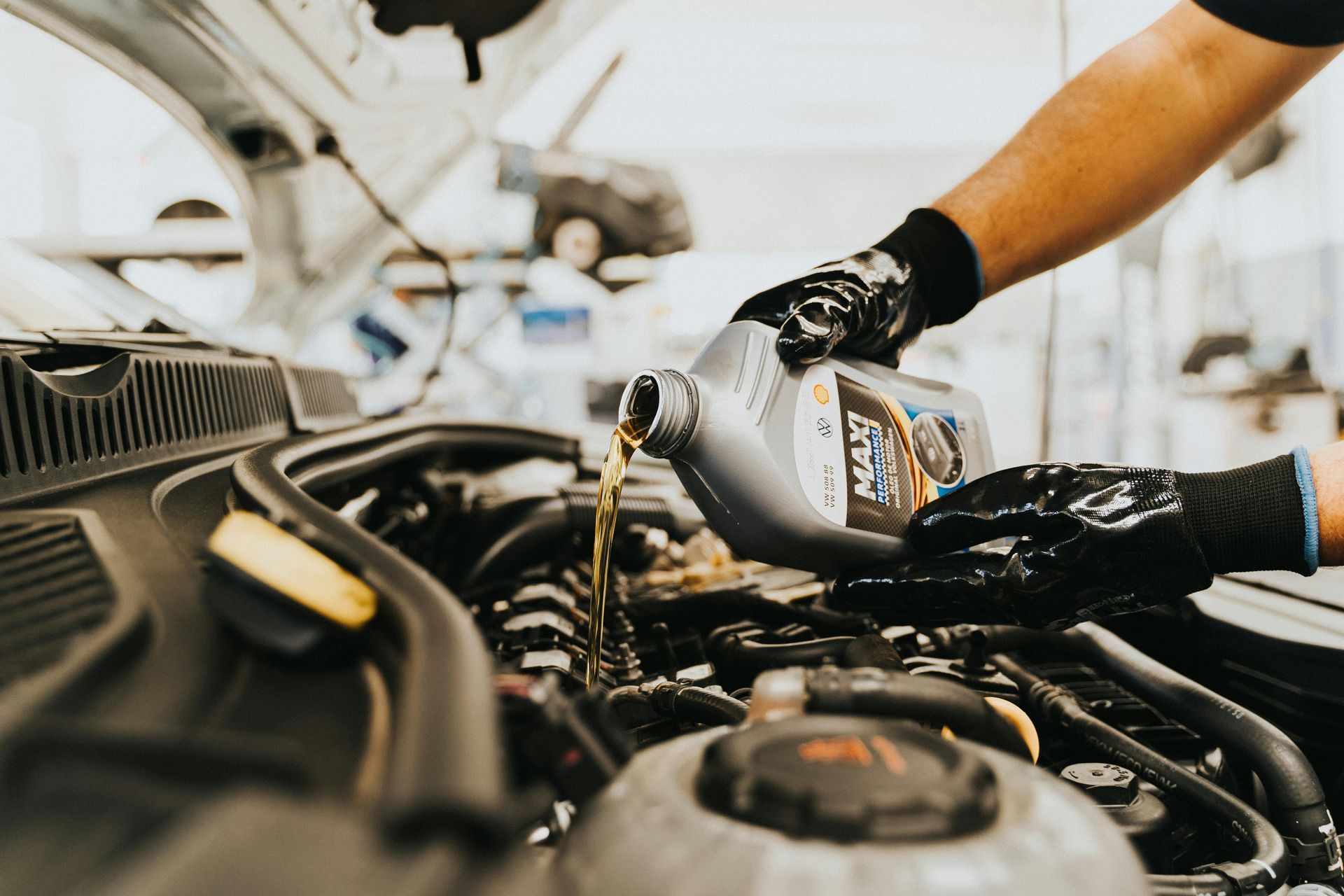Getting Your Tires Ready for Virginia's Wet Autumn Roads
Fall in Northern Virginia brings more than just beautiful foliage—it also delivers increased rainfall, morning dew, and slippery road conditions that test your tires' grip and safety. For drivers in Warrenton and surrounding areas, properly prepared tires can mean the difference between confident driving and dangerous skids on wet pavement.
Virginia's autumn weather patterns create unique challenges for drivers. One morning you might enjoy clear, crisp conditions, while afternoon thunderstorms leave roads slick and treacherous. Your tires are the only connection between your vehicle and the road surface, making their condition critical for safe fall driving.
Why Fall Conditions Challenge Your Tires
Increased Rainfall and Standing Water
Virginia typically sees increased precipitation during fall months, creating hazardous driving conditions on local roads like Route 211 and Highway 17. Standing water can hide potholes, reduce traction dramatically, and create hydroplaning conditions that even experienced drivers find challenging.
Temperature Fluctuations Affect Tire Pressure
Fall's variable temperatures cause tire pressure to fluctuate significantly. For every 10-degree temperature drop, tire pressure decreases by approximately 1-2 PSI. These pressure changes affect your tires' contact patch with the road, influencing both safety and fuel economy.
Wet Leaves Create Slippery Surfaces
Virginia's abundant trees create another fall hazard—wet leaves on roadways. These natural carpets become incredibly slippery when wet, creating conditions similar to ice. Your tires need adequate tread depth and proper inflation to maintain traction on these deceptively dangerous surfaces.
Morning Frost and Dew
Early fall mornings around Warrenton often feature heavy dew or light frost that makes road surfaces slippery. This moisture combines with road oils and debris to create particularly hazardous conditions during morning commute hours.
Essential Tire Preparation Steps
Check Tire Pressure Weekly
Fall's temperature swings make regular pressure monitoring crucial. Check all four tires plus your spare when they're cold—before driving or at least three hours after your last trip. Proper inflation improves wet weather traction, reduces stopping distances, and prevents uneven wear.
Why It Matters: Underinflated tires have less contact with the road surface, reducing grip when you need it most. Overinflated tires provide less contact area and can make your vehicle feel skittish on wet pavement.
Measure Tread Depth Accurately
Adequate tread depth is essential for channeling water away from your tire's contact patch. Virginia law requires minimum 2/32" tread depth, but safety experts recommend replacing tires at 4/32" for wet weather driving.
The Penny Test: Insert a penny into your tire's tread with Lincoln's head facing down. If you can see the top of Lincoln's head, your tread is too shallow for safe wet weather driving.
The Quarter Test: For better wet weather performance, use a quarter instead. If you can see Washington's head, consider replacing your tires before fall rains intensify.
Inspect for Irregular Wear Patterns
Fall tire preparation includes checking for uneven wear that reduces wet weather performance. Common patterns include:
- Edge Wear: Often indicates improper inflation or alignment issues
- Center Wear: Usually means overinflation
- Cupping or Scalloping: Suggests suspension problems or tire imbalance
- One-Sided Wear: Typically indicates alignment problems
These wear patterns reduce your tires' ability to maintain traction on wet surfaces and require professional attention.
Examine Sidewalls and Overall Condition
Look for cracks, bulges, or embedded objects that could cause sudden failure during challenging fall driving conditions. Pay special attention to the sidewall area where damage often occurs but may not be immediately obvious.
Tire Technology for Wet Weather Performance
Tread Pattern Design
Modern tires feature sophisticated tread patterns designed specifically for water evacuation. Deep circumferential grooves channel water away from the contact patch, while smaller sipes provide additional biting edges for wet traction.
All-Season vs. Summer Tires: All-season tires typically perform better in wet conditions than summer tires, especially as temperatures drop. Their rubber compounds remain flexible in cooler weather, providing better grip.
Tire Age Considerations
Even tires with adequate tread depth can become dangerous as they age. Rubber compounds harden over time, reducing wet weather grip. Most tire manufacturers recommend replacement after six years regardless of tread depth, and definitely by 10 years.
Professional Services That Enhance Wet Weather Safety
Wheel Alignment
Proper alignment ensures even tire wear and optimal contact with the road surface. Misaligned wheels cause tires to scrub rather than roll smoothly, reducing wet weather traction and shortening tire life.
Tire Rotation
Regular rotation promotes even wear across all four tires, ensuring consistent performance in wet conditions. Different positions on your vehicle create different wear patterns, and rotation helps balance these effects.
Balancing
Properly balanced tires maintain consistent contact with the road surface, improving wet weather stability and reducing premature wear. Unbalanced tires can cause vibration and uneven wear that reduces wet weather performance.
Driving Techniques for Wet Fall Roads
Reduce Speed Appropriately
Wet roads require significantly longer stopping distances. Reduce your speed by at least 10-15 mph in wet conditions, and slow down even more when encountering wet leaves or standing water.
Increase Following Distance
Double or triple your normal following distance on wet roads. This extra space gives you more time to react to sudden stops or emergency situations that wet conditions can create.
Avoid Sudden Movements
Smooth, gradual inputs work best on wet surfaces. Avoid sudden acceleration, hard braking, or quick steering movements that can break traction and cause skids.
Choose Your Path Carefully
Water tends to collect in wheel ruts and low spots on the road. When possible, drive in the tracks where previous vehicles have displaced water, but be prepared for sudden traction changes.
Local Road Considerations
Rural Roads Around Warrenton
Many rural roads in Fauquier County have less drainage than major highways, causing water to stand longer after rain. These roads also collect more leaves and debris that create additional traction challenges.
Highway Driving Challenges
Interstate 66 and other major highways see heavy traffic that can create spray and reduced visibility during rain. Proper tire maintenance becomes even more critical when dealing with high-speed wet weather driving.
Construction Zones
Fall construction projects around Northern Virginia often feature temporary surfaces, loose gravel, and altered drainage patterns that create unexpected traction challenges for drivers.
When to Seek Professional Help
Tire Replacement Timing
Don't wait until your tires are completely worn to replace them. Fall tire replacement ensures you have maximum tread depth for winter's challenging conditions. If you need new tires, fall installation allows break-in time before winter weather arrives.
Suspension and Alignment Issues
If your vehicle pulls to one side, vibrates, or shows uneven tire wear, professional diagnosis can identify problems that affect wet weather safety. These issues often worsen in wet conditions, making prompt repair essential.
Wheel and Tire Mounting
Professional mounting ensures proper bead seating and balancing that home installation rarely achieves. This precision becomes critical for wet weather performance and safety.
Planning Ahead for Winter
Fall tire preparation also means thinking ahead to winter needs. If you're considering winter tires, fall is the ideal time to research options and schedule installation before the first winter storm arrives.
All-Season vs. Winter Tire Decisions
Virginia's moderate winter climate makes all-season tires adequate for most drivers, but those who commute early mornings or live in rural areas might benefit from dedicated winter tires for the coldest months.
Storage Considerations
If you change to winter tires, you'll need proper storage for your regular tires. Professional storage services protect tires from UV damage, temperature extremes, and other factors that reduce tire life.
Expert Tire Services in Warrenton
Don't let worn or improperly maintained tires compromise your safety on Virginia's wet fall roads. At Ish Auto Clinic, our ASE Master Certified technicians provide comprehensive tire services for Toyota, Lexus, and Japanese vehicles. We'll assess your tire condition, check alignment and balance, and ensure your tires are ready for fall's challenging driving conditions.
Our tire services include pressure monitoring, tread depth measurement, rotation, balancing, and professional installation of new tires when needed. We use only high-quality tires that meet or exceed manufacturer specifications, ensuring optimal wet weather performance and safety.
Located at 122 Sullivan St in Warrenton, we're ready to prepare your tires for safe fall driving. Call (540) 349-4178 today to schedule your tire inspection and drive with confidence on wet autumn roads.











